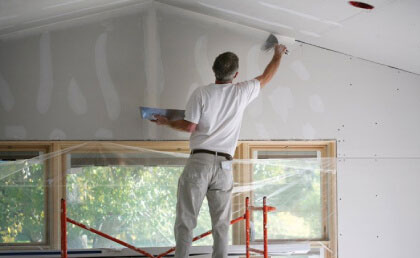

A great interior paint job in Auckland or Wellington starts with two simple but vital actions: removing every trace of plasterboard dust and sealing the surface with the right primer. Skip either step and even premium paint will look blotchy, peel early, and cost you extra coats. Follow the guide below for rock-solid, professional results that stand up to Auckland humidity and Wellington’s blustery cool spells.
The process takes patience, yet it pays you back with walls that stay smooth and vibrant year after year.
Loose dust might seem harmless, but it wrecks adhesion and turns paint into sandpaper under your roller. The goal is zero residue.
Primer is not optional paint in disguise. It is a specialised sealer that solves four problems common to new Gib® boards.
Polyvinyl acetate formulas are purpose built for fresh drywall and Gib®. They flash off quickly, lock down fine dust, and dry to a dead-flat white that highlights imperfections for easy touch-ups. Look for Dulux Professional Total Prep, Valspar PVA Primer, or similar lines sold nationwide.
Where a deeper base tone or added filling power is needed, choose an acrylic sealer-undercoat such as Resene Broadwall Surface Prep & Seal or Dulux Precise ASU. These leave a slightly satin film that improves hold-out for deep colours in living rooms and galleries.
Some guides suggest thinning interior matte paint with water to create a “mist coat.” It works in a pinch, yet it rarely matches the consistency and adhesion of a dedicated sealer. Our crews stick with true primers for predictable drying and easy sanding.
Rule of thumb: Stay water-based for Gib®. Oil primers are harder to clean and release more odour than needed in modern, ventilated homes.
Lay drop clothes tight to skirting boards before opening the can. Keep a damp rag nearby to grab drips fast.
Stir primer once more and decant a liter into the pail. Dip the brush 30 mm, tap off surplus against the inside rim, then draw a steady line along ceilings, corners, and around fittings. Two light passes beat one heavy, runny pass every time.
Most water-based sealers dry to touch in an hour, yet always follow the label and local temperature. Once dry, glide a gloved hand across panels. If you feel rough grit, scuff lightly with the sanding sponge, then vacuum again.
A second primer coat is wise when chasing a Level 5 finish, aiming for ultra-smooth walls in critical lighting such as stairwells or offices with large windows. Apply it exactly like the first.
Level 5 means a flawless surface free from joint shadowing when viewed at sharp angles. In media rooms, showrooms, or anywhere strong light grazes the wall, spend the extra hour on coat number two plus a quick pole sand. The result rivals commercial plasterboard finishes without the giant price tag.
Qualified Painters crews schedule prep to suit local weather patterns, so projects stay on track all year.
Dust removal and priming are the silent heroes of every stunning interior repaint. They stop peeling, cut repaint cycles, and let premium colours pop.
Qualified Painters tackles the messy part for you: Gib® fixing and stopping, meticulous vacuum sanding, high-build priming, and the final splash of colour. We service homes and businesses, bringing punctual crews, tidy work habits, and a workmanship guarantee.
Ready for walls that stay picture perfect? Book your free site visit today and let us lift your space from average to outstanding.